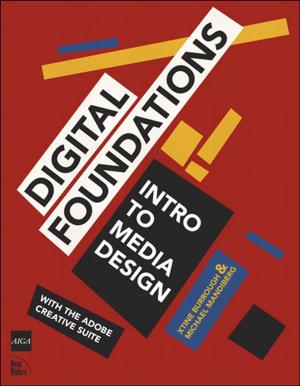Getting Started with General and Scanline Materials in 3ds Max 2017
Nonfiction, Computers, Application Software, Computer Graphics| Author: | Ravi Conor | ISBN: | 9781540175861 |
| Publisher: | ROC | Publication: | October 22, 2017 |
| Imprint: | Language: | English |
| Author: | Ravi Conor |
| ISBN: | 9781540175861 |
| Publisher: | ROC |
| Publication: | October 22, 2017 |
| Imprint: | |
| Language: | English |
Why this Book?
The Getting Started with General and Scanline Materials in 3ds Max 2017, 2nd Edition textbook offers a hands-on exercises based strategy for all those digital artists who have just started working on the 3ds Max [no experience needed] and interested in learning texturing in 3ds Max.
This brilliant guide takes you step-by-step through the whole process of texturing with General and Scanline materials/maps in 3ds Max. From the very first pages, the users of the book will learn how to effectively use General and Scanline materials/maps in 3ds Max.
What are the main features of the book?
• The book is written using 3ds Max 2017 in an easy to understand language.
• General and Scanline materials/maps explained.
• 20 Hands-on exercises and practical tests to hone your skills.
• Detailed coverage of tools and features.
• Additional tips, guidance, and advice is provided.
• Important terms are in bold face so that you never miss them.
• Support for the technical aspect of the book.
• 3ds Max files and textures used are available for download from the accompanying website.
more info: http://www.risingpolygon.co/search/label/Free%20eBooks
Why this Book?
The Getting Started with General and Scanline Materials in 3ds Max 2017, 2nd Edition textbook offers a hands-on exercises based strategy for all those digital artists who have just started working on the 3ds Max [no experience needed] and interested in learning texturing in 3ds Max.
This brilliant guide takes you step-by-step through the whole process of texturing with General and Scanline materials/maps in 3ds Max. From the very first pages, the users of the book will learn how to effectively use General and Scanline materials/maps in 3ds Max.
What are the main features of the book?
• The book is written using 3ds Max 2017 in an easy to understand language.
• General and Scanline materials/maps explained.
• 20 Hands-on exercises and practical tests to hone your skills.
• Detailed coverage of tools and features.
• Additional tips, guidance, and advice is provided.
• Important terms are in bold face so that you never miss them.
• Support for the technical aspect of the book.
• 3ds Max files and textures used are available for download from the accompanying website.
more info: http://www.risingpolygon.co/search/label/Free%20eBooks















